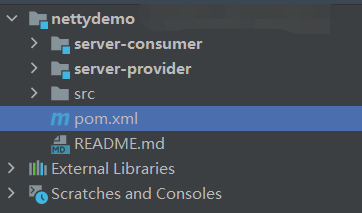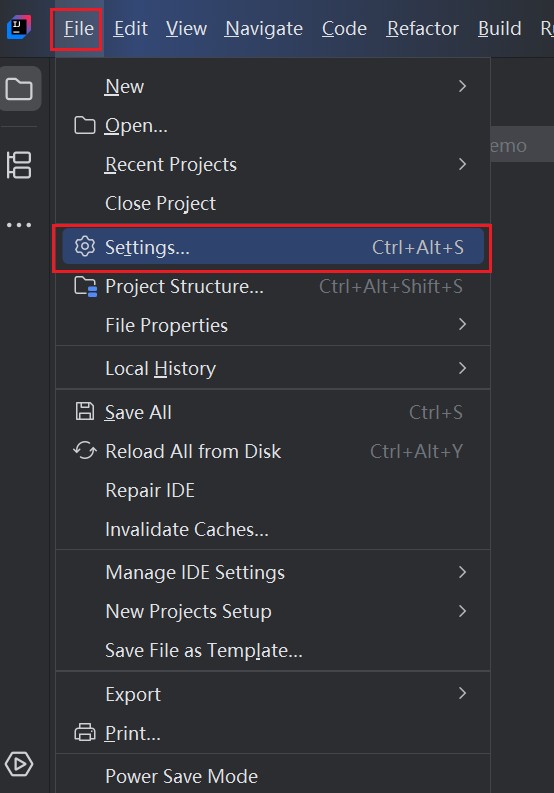Netty事件循环主逻辑
Netty 事件循环主逻辑在 NioEventLoop.run 中的 processSelectedKeys函数中
|
1 2 3 4 5 6 7 8 9 10 11 12 13 14 15 16 17 18 19 20 21 22 23 24 25 26 27 28 29 30 31 32 33 34 35 36 37 38 39 40 41 42 43 44 45 46 47 48 49 50 51 52 53 54 55 56 |
protected void run() { //主循环不断读取IO事件和task,因为 EventLoop 也是 juc 的 ScheduledExecutorService 实现 for (;;) { try { switch (selectStrategy.calculateStrategy(selectNowSupplier, hasTasks())) { case SelectStrategy.CONTINUE: continue; case SelectStrategy.SELECT: select(wakenUp.getAndSet(false));
if (wakenUp.get()) { selector.wakeup(); } // fall through default: }
cancelledKeys = 0; needsToSelectAgain = false; // IO事件占总执行时间的百分比 */ final int ioRatio = this.ioRatio; if (ioRatio == 100) { try { processSelectedKeys(); } finally { // Ensure we always run tasks. runAllTasks(); } } else { final long ioStartTime = System.nanoTime(); try { processSelectedKeys(); } finally { // Ensure we always run tasks. final long ioTime = System.nanoTime() - ioStartTime; runAllTasks(ioTime * (100 - ioRatio) / ioRatio); } } } catch (Throwable t) { handleLoopException(t); } // Always handle shutdown even if the loop processing threw an exception. try { if (isShuttingDown()) { closeAll(); if (confirmShutdown()) { return; } } } catch (Throwable t) { handleLoopException(t); } } } |
processSelectedKeys 函数 执行时会判断是否执行优化的版本,即判断 SelectedSelectionKeySet 是否为空。
是否开启优化取决于是否设置了环境变量 io.netty.noKeySetOptimization ,默认是 false 代表开启
|
1 2 |
private static final boolean DISABLE_KEYSET_OPTIMIZATION = SystemPropertyUtil.getBoolean("io.netty.noKeySetOptimization", false); |
原理是通过反射的方式设置 eventLoop绑定的selector中的 selectKeys属性 为 SelectedSelectionKeySet ,好处是不用 迭代 selector.selectedKeys()
初始化 EventLoop
注入时机为初始化 EventLoop 的时候
|
1 2 3 4 5 6 7 8 9 10 11 12 13 14 15 16 17 18 19 20 21 22 23 24 25 26 27 28 29 30 |
private SelectorTuple openSelector() { 12 //注入逻辑40 Object maybeException = AccessController.doPrivileged(new PrivilegedAction<Object>() { @Override public Object run() { try { Field selectedKeysField = selectorImplClass.getDeclaredField("selectedKeys"); Field publicSelectedKeysField = selectorImplClass.getDeclaredField("publicSelectedKeys");
Throwable cause = ReflectionUtil.trySetAccessible(selectedKeysField); if (cause != null) { return cause; } cause = ReflectionUtil.trySetAccessible(publicSelectedKeysField); if (cause != null) { return cause; }
selectedKeysField.set(unwrappedSelector, selectedKeySet); publicSelectedKeysField.set(unwrappedSelector, selectedKeySet); return null; } catch (NoSuchFieldException e) { return e; } catch (IllegalAccessException e) { return e; } } });
........78 } |
处理读事件
处理读事件主要在processSelectedKey 中 ,分别对 读、写、连接事件进行了处理。
|
1 2 3 4 5 6 7 8 9 10 11 12 13 14 15 16 17 18 19 20 21 22 23 24 25 26 27 28 29 30 31 32 33 34 35 36 37 38 39 40 41 42 43 44 45 46 47 48 49 50 51 52 53 54 55 56 57 58 59 60 61 62 63 |
private void processSelectedKeysOptimized() { for (int i = 0; i < selectedKeys.size; ++i) { final SelectionKey k = selectedKeys.keys[i]; // null out entry in the array to allow to have it GC'ed once the Channel close // See https://github.com/netty/netty/issues/2363 selectedKeys.keys[i] = null; final Object a = k.attachment(); if (a instanceof AbstractNioChannel) { //分别处理每个channel的事件 processSelectedKey(k, (AbstractNioChannel) a); } else { @SuppressWarnings("unchecked") NioTask<SelectableChannel> task = (NioTask<SelectableChannel>) a; processSelectedKey(k, task); } if (needsToSelectAgain) { // null out entries in the array to allow to have it GC'ed once the Channel close // See https://github.com/netty/netty/issues/2363 selectedKeys.reset(i + 1); selectAgain(); i = -1; } } } private void processSelectedKey(SelectionKey k, AbstractNioChannel ch) { final AbstractNioChannel.NioUnsafe unsafe = ch.unsafe(); if (!k.isValid()) { final EventLoop eventLoop; try { eventLoop = ch.eventLoop(); } catch (Throwable ignored) { // If the channel implementation throws an exception because there is no event loop, we ignore this // because we are only trying to determine if ch is registered to this event loop and thus has authority // to close ch. return; } // Only close ch if ch is still registered to this EventLoop. ch could have deregistered from the event loop // and thus the SelectionKey could be cancelled as part of the deregistration process, but the channel is // still healthy and should not be closed. // See https://github.com/netty/netty/issues/5125 if (eventLoop != this || eventLoop == null) { return; } // close the channel if the key is not valid anymore unsafe.close(unsafe.voidPromise()); return; } try { int readyOps = k.readyOps(); // We first need to call finishConnect() before try to trigger a read(...) or write(...) as otherwise // the NIO JDK channel implementation may throw a NotYetConnectedException. if ((readyOps & SelectionKey.OP_CONNECT) != 0) { // remove OP_CONNECT as otherwise Selector.select(..) will always return without blocking // See https://github.com/netty/netty/issues/924 int ops = k.interestOps(); ops &= ~SelectionKey.OP_CONNECT; k.interestOps(ops); //处理了连接事件 unsafe.finishConnect(); } // Process OP_WRITE first as we may be able to write some queued buffers and so free memory. if ((readyOps & SelectionKey.OP_WRITE) != 0) { // Call forceFlush which will also take care of clear the OP_WRITE once there is nothing left to write |
|
1 2 3 4 5 6 7 8 9 10 11 12 13 14 |
//将要写入的buffer flush掉 ch.unsafe().forceFlush(); }
// Also check for readOps of 0 to workaround possible JDK bug which may otherwise lead // to a spin loop if ((readyOps & (SelectionKey.OP_READ | SelectionKey.OP_ACCEPT)) != 0 || readyOps == 0) { //回调 pipeline 上所有的 ChannelInboundHandler 的 fireChannelRead 和 channelReadComplete 函数 unsafe.read(); } } catch (CancelledKeyException ignored) { unsafe.close(unsafe.voidPromise()); } } |
注意
NioServerSocketChannel 和 NioSocketChannel 都是 同样的 处理逻辑, 不同的是 前者 只关注 OP_ACCEPT 和 OP_READ事件, 后者 关注 OP_READ、OP_WRITE、OP_CONNECT事件
当NioServerSocketChannel 发生 OP_ACCEPT事件时 会 触发
AbstractNioChannel.NioUnsafe.read -> NioSctpServerChannel.doReadMessages(List<Object>) -> ServerBootstrapAcceptor.channelRead ,
将受到的 NioSocketChannel 注册到 childEventLoop 。


